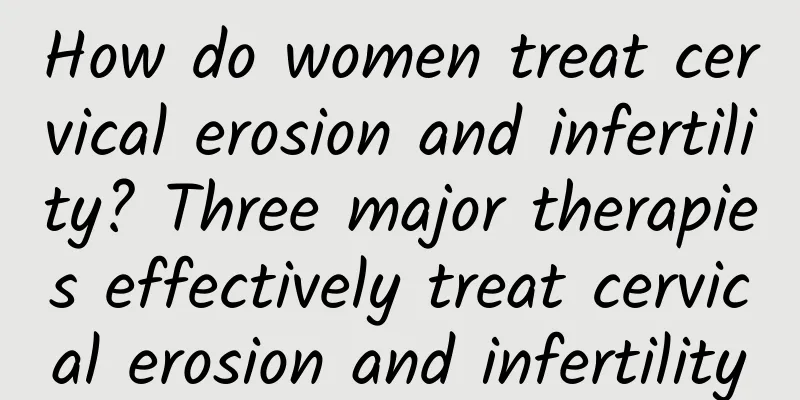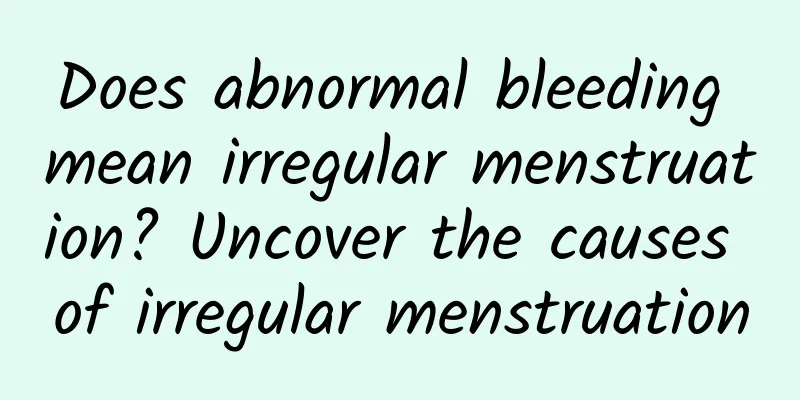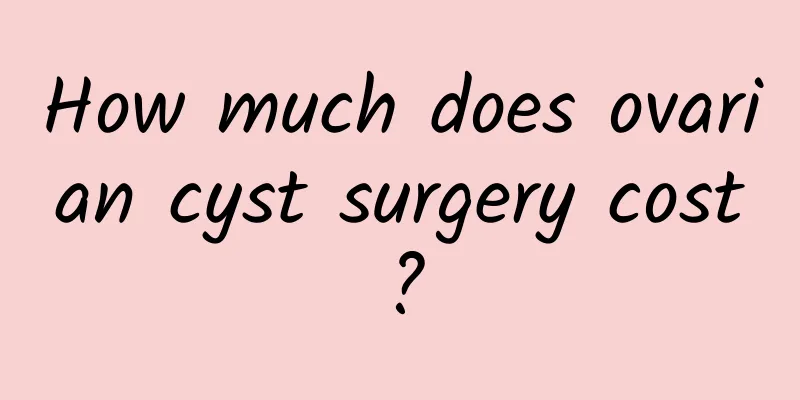How do women treat cervical erosion and infertility? Three major therapies effectively treat cervical erosion and infertility

|
Cervical erosion is one of the more common cervical diseases in women, and is also one of the causes of female infertility, affecting the normal fertility of many women and causing serious troubles to many women and their families. So, how to treat cervical erosion infertility? Below, experts will give you a detailed introduction on how to treat cervical erosion infertility. The shape of the cervix and the function of cervical mucus directly affect whether a considerable number of sperm can swim into the uterine cavity to be capacitated. Organic or functional diseases of the cervix affect the entry and storage of semen or sperm into the cervical canal. Experts point out that the cervix is very important for female fertility. If there is a problem with the cervix, it can easily lead to infertility. How to treat cervical erosion and infertility? Experts point out that there are several main methods for treating cervical erosion infertility: 1. Physical therapy Physical therapy is a common method for treating cervical erosion infertility. It is also a widely used treatment method with a short course of treatment and good efficacy. Physical therapy is mainly suitable for patients with large erosion areas or deep inflammatory infiltration. However, it will cause certain damage to women's bodies, so female friends should be careful when choosing it. 2. Drug Therapy How to treat cervical erosion infertility? Experts point out that drug therapy is also one of the commonly used methods for treating cervical erosion infertility, which is mainly suitable for patients with relatively small cervical erosion area or shallow inflammatory infiltration. 3. Surgical treatment Surgical treatment is also a treatment method for cervical erosion infertility, which is divided into conservative treatment and non-conservative treatment. Experts say that conservative treatment means ensuring the normal cervix without removal, and normal fertility after recovery, while non-conservative treatment means timely removal of the cervix, which will affect future fertility. Warm reminder: After understanding how to treat cervical erosion and infertility, if female friends find that they have symptoms of cervical erosion, they must go to a regular hospital for examination and treatment in time to avoid adverse consequences. |
Recommend
Basic nursing routine measures for hyperprolactinemia
What are the basic nursing routine measures for h...
Eat the "Golden Triangle" to stay away from cardiovascular diseases
Due to changes in people's lifestyles and eat...
What to do if pregnancy is complicated by uterine fibroids
When pregnancy is complicated by uterine fibroids...
Detailed introduction to several common complications of cervicitis
Clinically, it is normal for complications of cer...
Analysis of common treatment methods for ectopic pregnancy
According to the survey, although there are many ...
What to eat for breakfast to prevent the recurrence of uterine fibroids What to eat for breakfast to prevent the recurrence of uterine fibroids
What to eat for breakfast to prevent the recurren...
Fat OUT! Learn how to knee-strike to burn calories
Boxing aerobics is popular in China. It not only ...
Jun Ji-hyun's 4 weight loss secrets revealed! Half-body bath promotes metabolism, "this 1 trick" controls appetite
Although Korean actress Jun Ji-hyun is already 41...
Why do women experience threatened miscarriage?
For women, ten months of pregnancy is very hard, ...
What should I do if my period doesn't come? Take medication first
If your period is not over, you can first take me...
What are the better preventive measures for cervicitis?
Among gynecological diseases, cervicitis is also ...
Causes of cervical warts
Cervical warts have a serious impact on the patie...
Pay more attention to the precautions after abortion
Abortion is the most practical solution for femal...
To lose weight, you need to supplement with high-quality protein! Mexican-style salad without gaining weight
If you want to have beautiful curves, it is very ...
Experts introduce you to uterine care after abortion
What to pay attention to after an abortion is a t...









